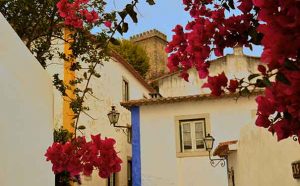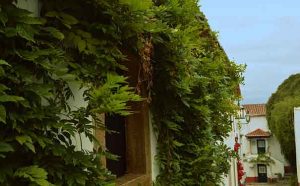Óbidos Literary Latitudes Festival: Visit us!
Óbidos Literary Latitudes Festival
This is Óbidos Literary Latitudes Festival, born of another book festival: FOLIO. The one that UNESCO took and make it so great that now Óbidos makes part of the UNESCO worldwide network of creative cities.
Latitudes was born from the desire to make a huge literary project in the village.. Latitudes is linked to the travel and tourism segment.
This greater need to travel and visit new places sharpens the reading of these books that show us the other side of dreams!
The format of the festival assumes the same as the FOLIO: presentation of books, exhibitions and concerts.
Schedule
As we had already mentioned, the Municipality of Óbidos schedules its events so that we can have fun all year round.
In this sense, this festival, which has been held since 2017, takes place in May and runs for a week.
For more information you should always use the organization's website so that there are no mistakes!
Tickects
The Latitudes Festival is free, so you won't need to buy or buy tickets to enter anywhere, book presentations, exhibitions or concerts
Location
In the town of Óbidos, festivals are held around the castle walls, where people have to purchase a ticket to enter.
In the case of the Óbidos Festival Latitudes, the setting is the village itself. Here all activities are carried out in various spaces scattered around the streets of Óbidos.
Parking Lot
Park your car in this charming village is easy as there are several parking lots scattered outside the town walls.
You can always park in free places like the car park behind the Caixa Geral de Depósitos (which is not guarded), or you can choose to pay and the car is protected - Aqueduct car park which is managed and supervised by volunteer firefighters.
Contacts
If you want to speak to the event organizer, you always have the official website to do so. Or else you have the Touristic Office.
The direct contacts of the Touristic Office of the village of Óbidos are:
- Phone: 262 959 231
- E-mail: [email protected]t
Podes sempre por estacionar em sítios gratuitos como o parque de estacionamento por trás da Caixa Geral de Depósitos (que não é vigiado), ou então optares por pagar e o carro estar protegido - parque de estacionamento do Aqueduto que é gerido e vigiado pelos Bombeiros voluntários.
Hotels
If you prefer to take a few days off to come and watch the Latitudes Festival you will find a place to sleep during the event.
Doubts are always around it! You either choose inside or outside the wall of the castle. Both versions have their cons and their virtues.
If you choose within the wall you have the picturesque village, the narrow streets, but you cannot park the car and you have to carry your luggage.
If you choose the warmth of a hotel or local accommodation outside the walls, it is easier to park and you don't have to carry your luggage!
Whatever it is, the decision is yours!
Restaurants
It's time to choose your next meal! Here too, there are options to be taken.
You can always opt for restaurants outside or inside the wall, but whatever it is, you will have the opportunity to eat something more traditional, international, vegetarian or simply a sandwich.
The choice at lunch is greater than at dinner, but whatever the period you choose, it is always best to reserve a table.
What to See
The village of Óbidos is known for being the village of the Queens after King D. Dinis in the XIV century gave the castle and the village as a wedding dowry to Queen Santa Isabel.
But in fact, the history of this place reminds us of the Celts who will have been the first people to inhabit these lands befores Christ.
Then the Romans conquered the Celts and built a city that still exists outside the village today - Eburobrittium (cannot be visited).
After the Romans came the Visigoths and after these the Moors who built the first castle in Óbidos (IX century).
However, nowadays the walled village you find is almost all made by the Portuguese who conquered the castle from the Moors in the XII century.
Today when strolling through the narrow streets of the village you have a set of monuments and museums that you can visit without paying because they are all free.
Our article on art and culture or heritage shows how you can do it and at what times!



